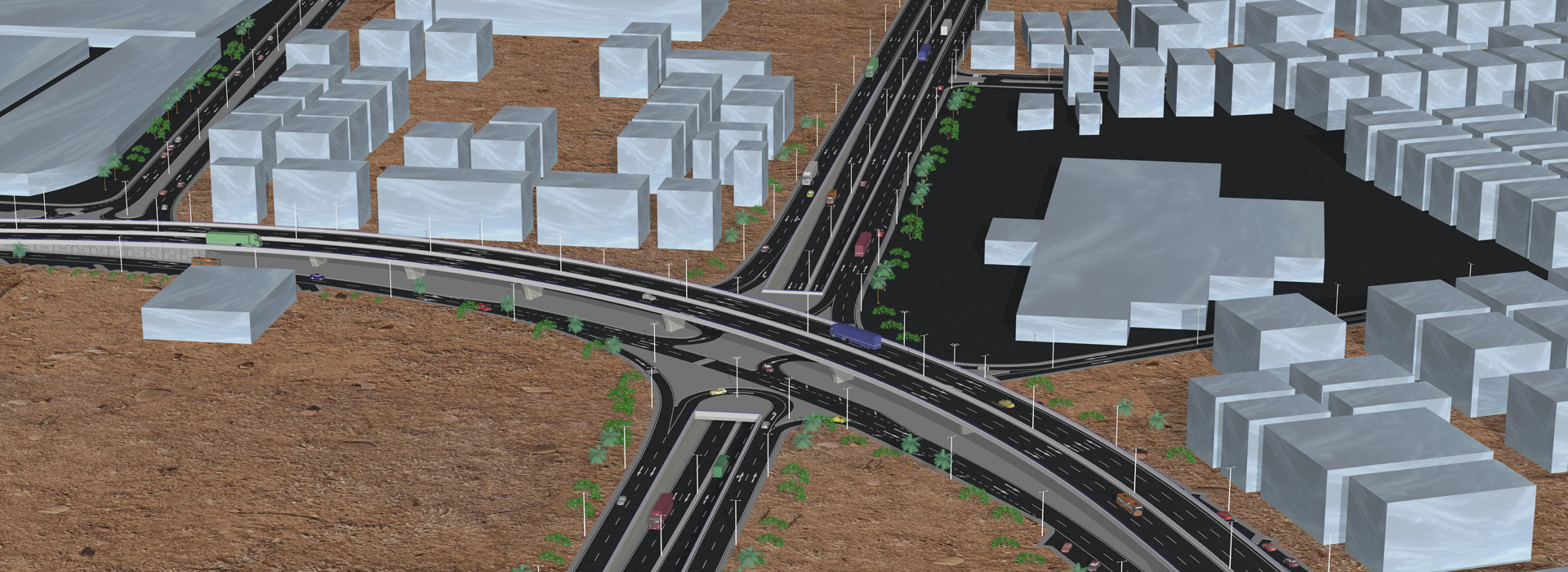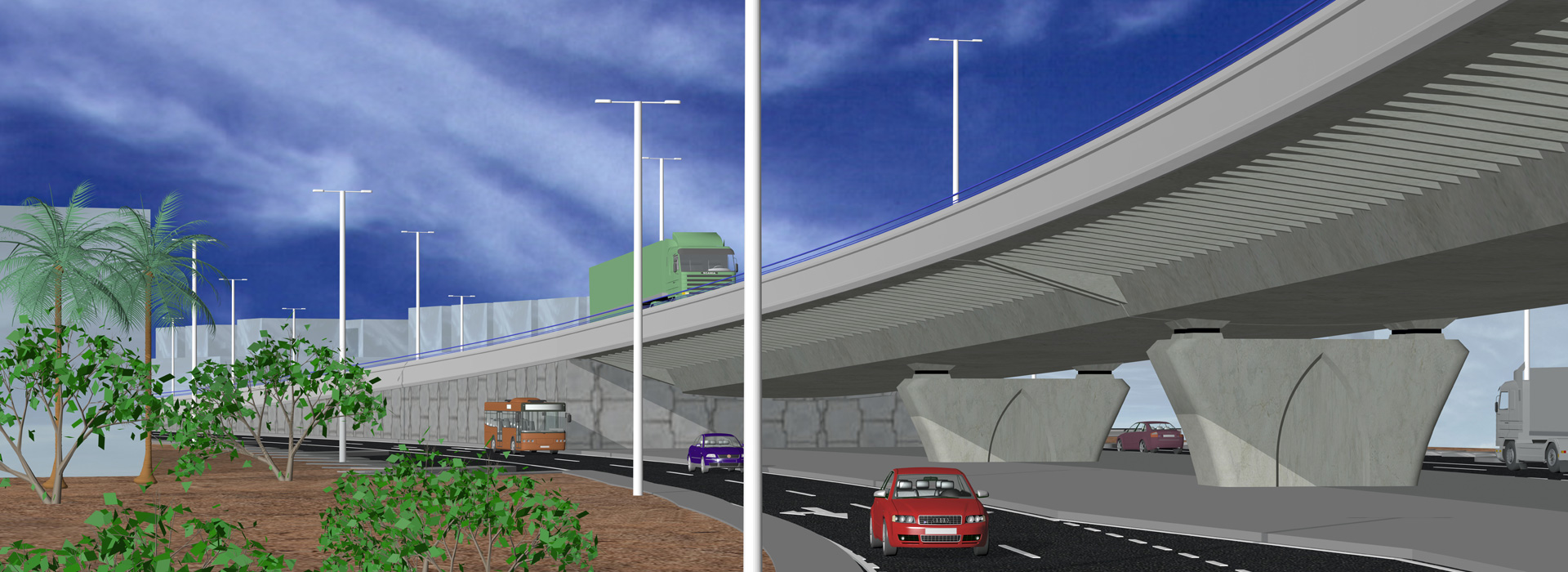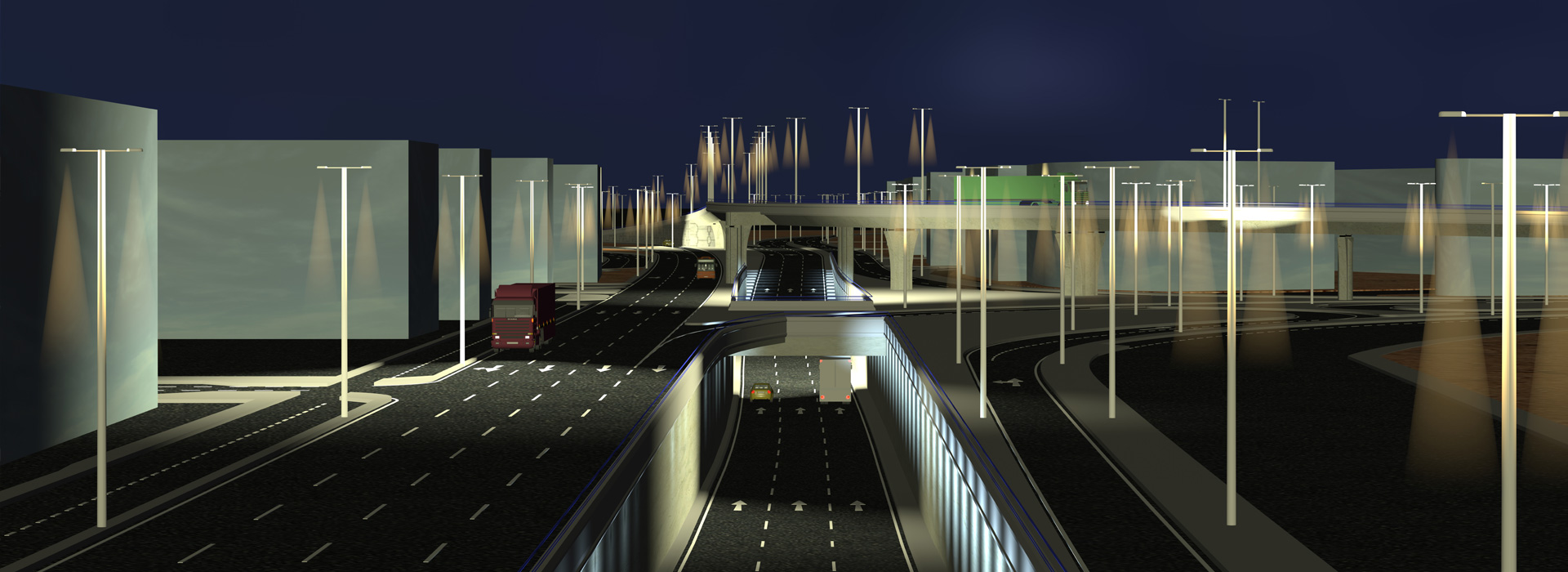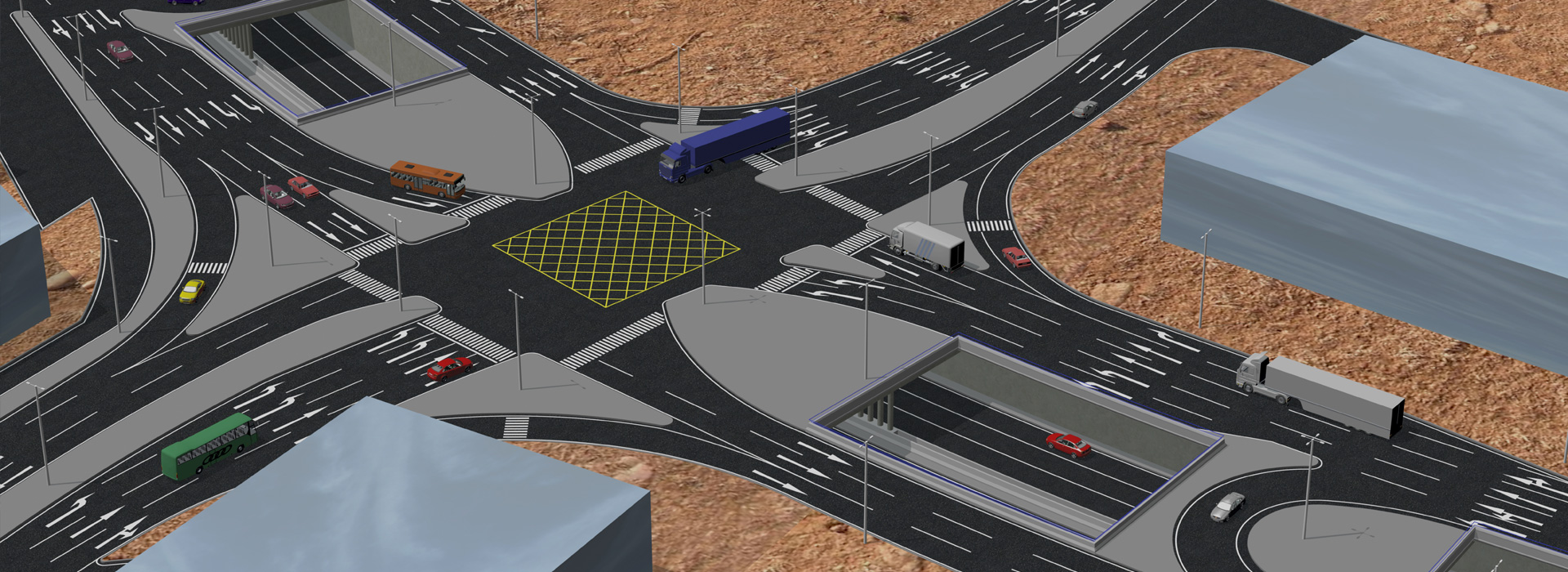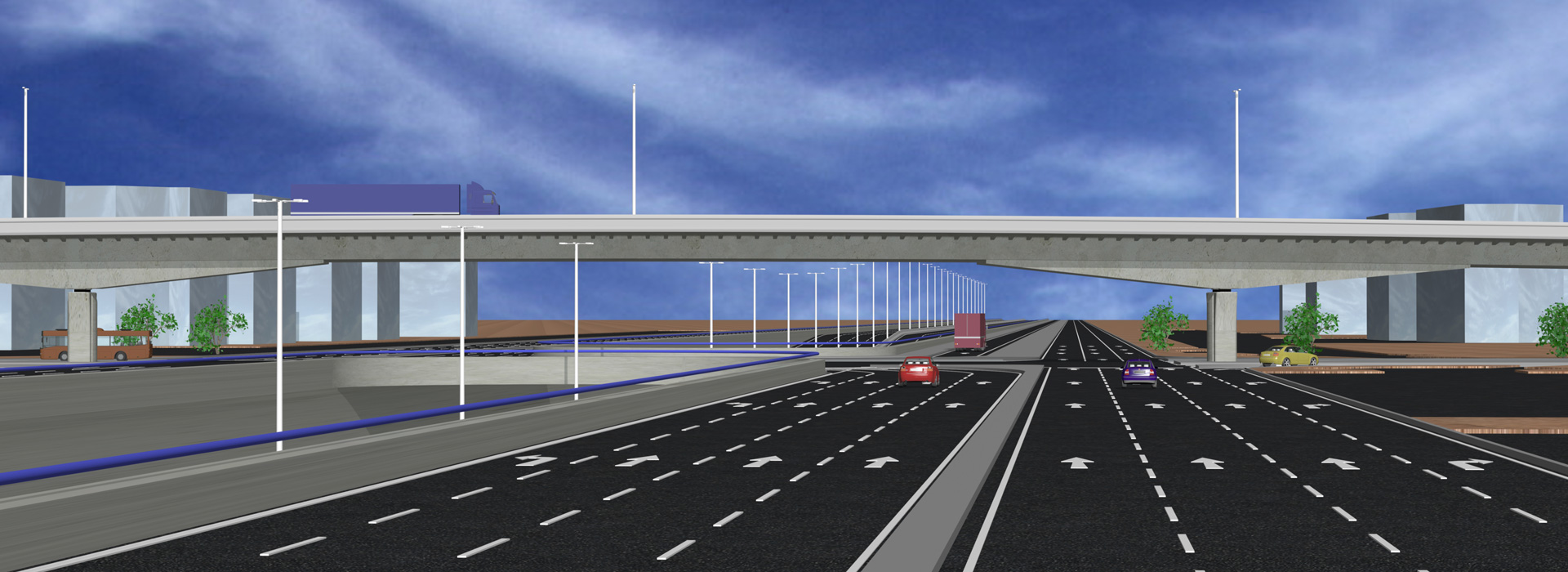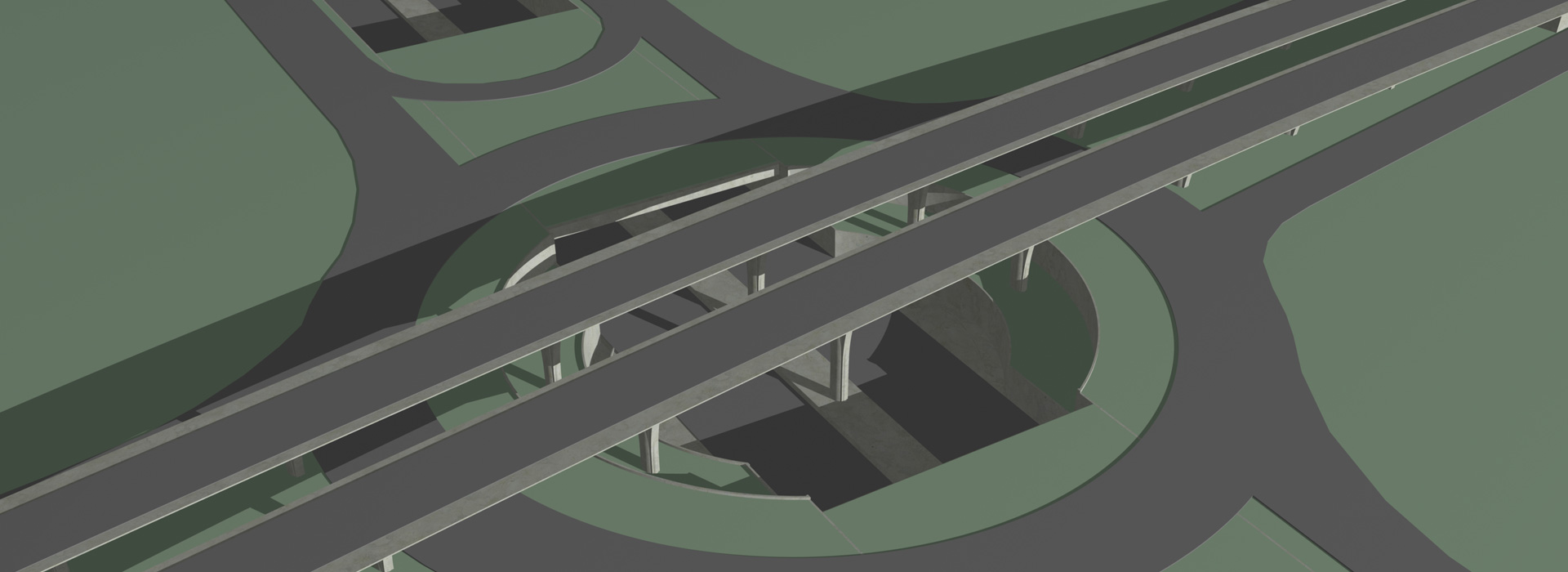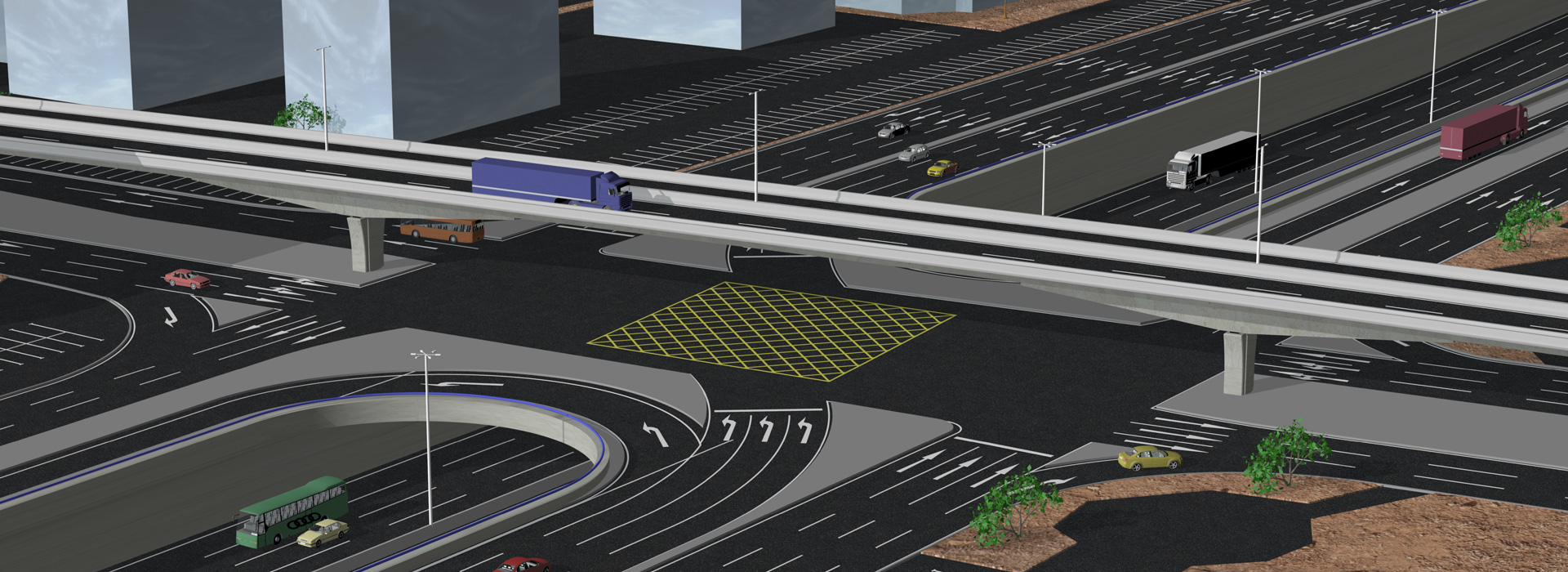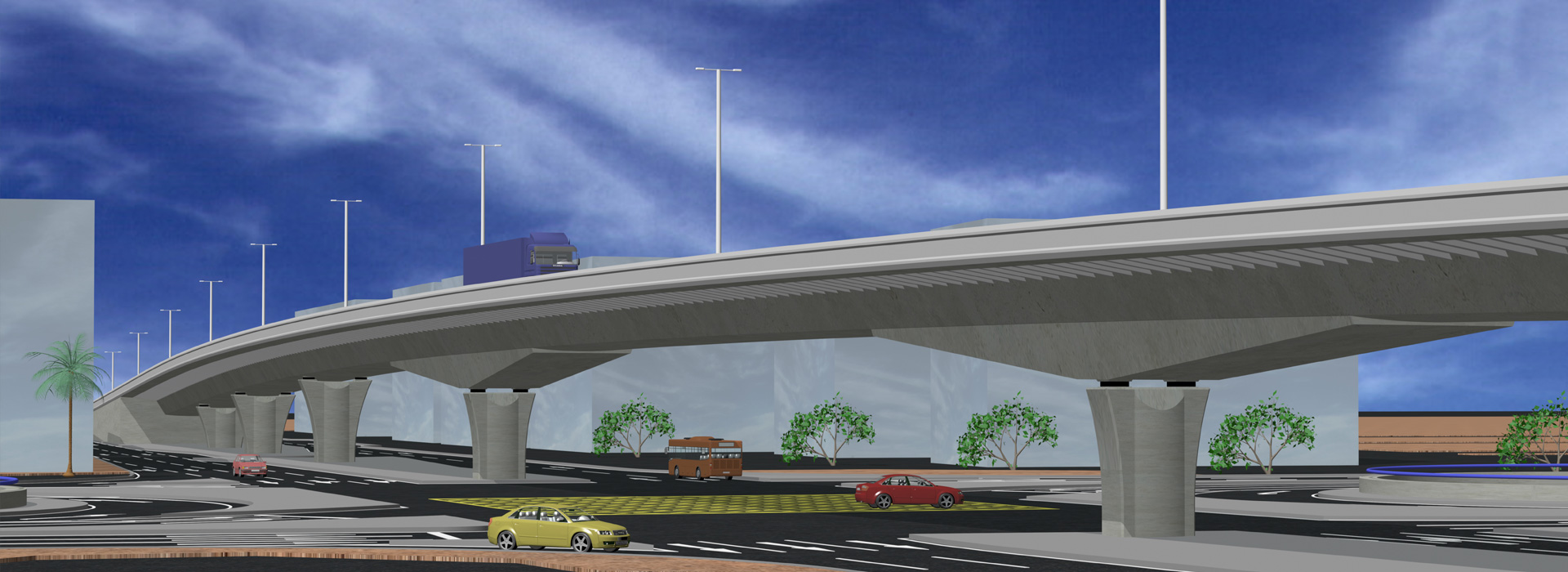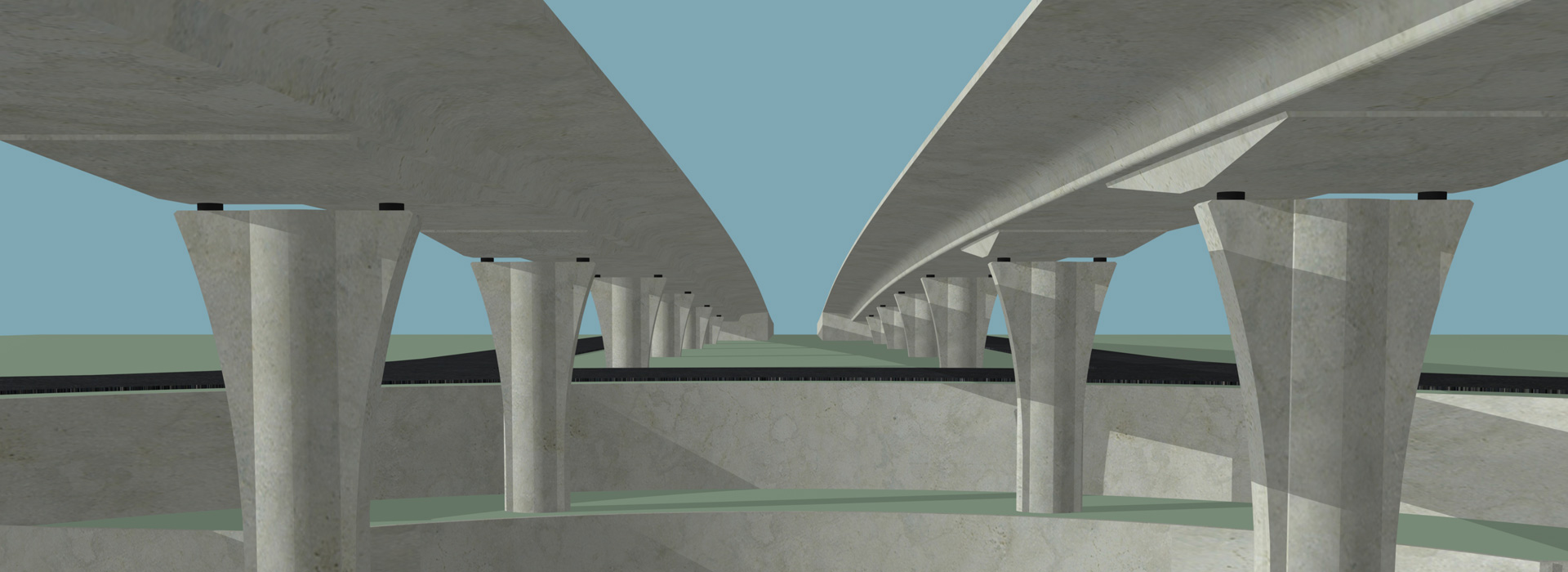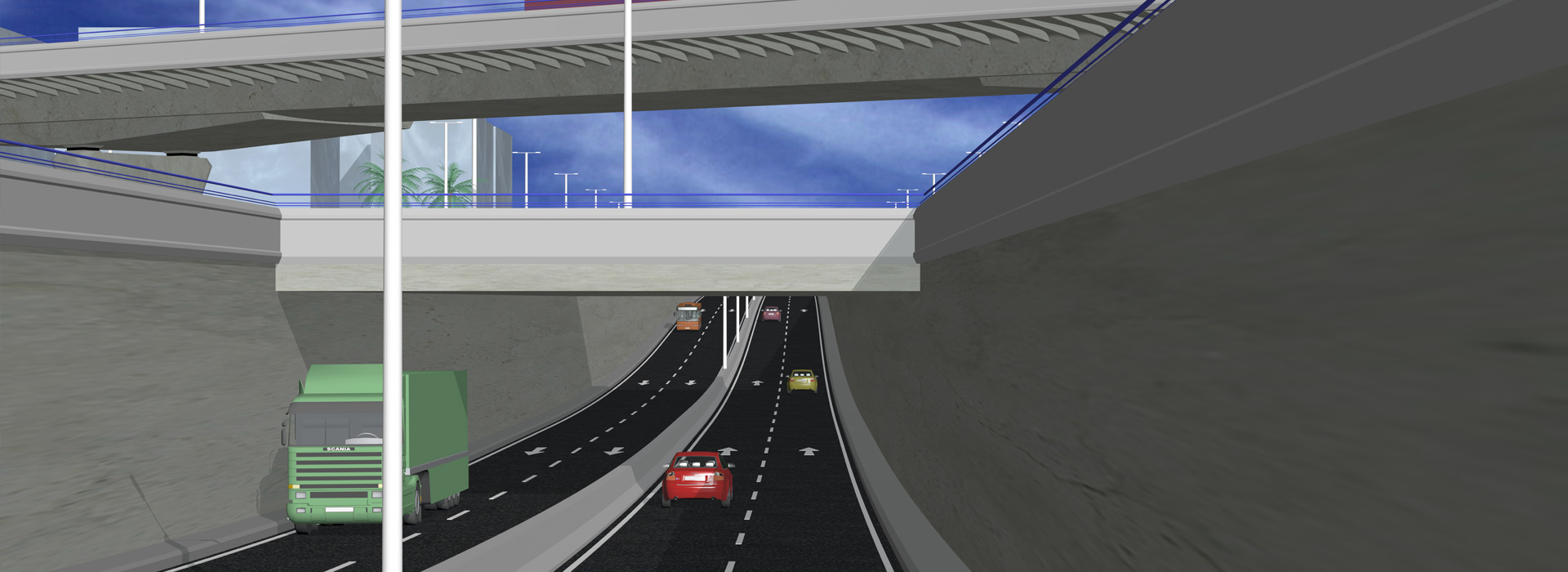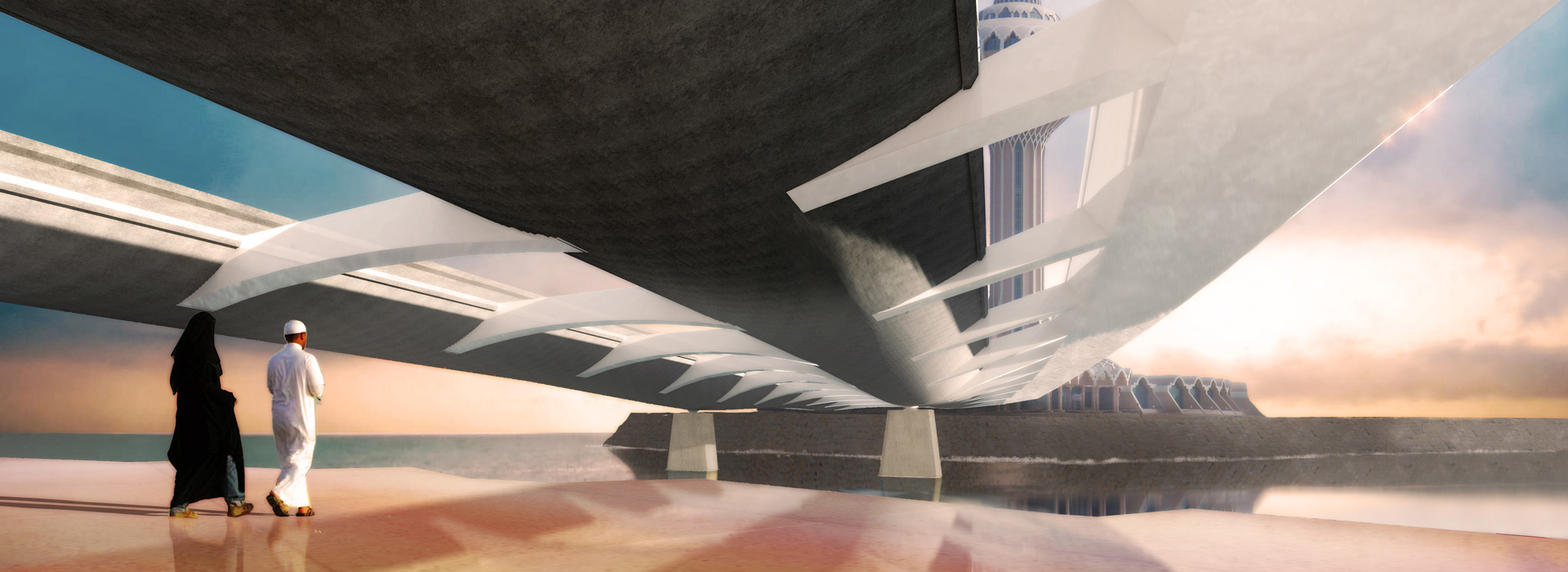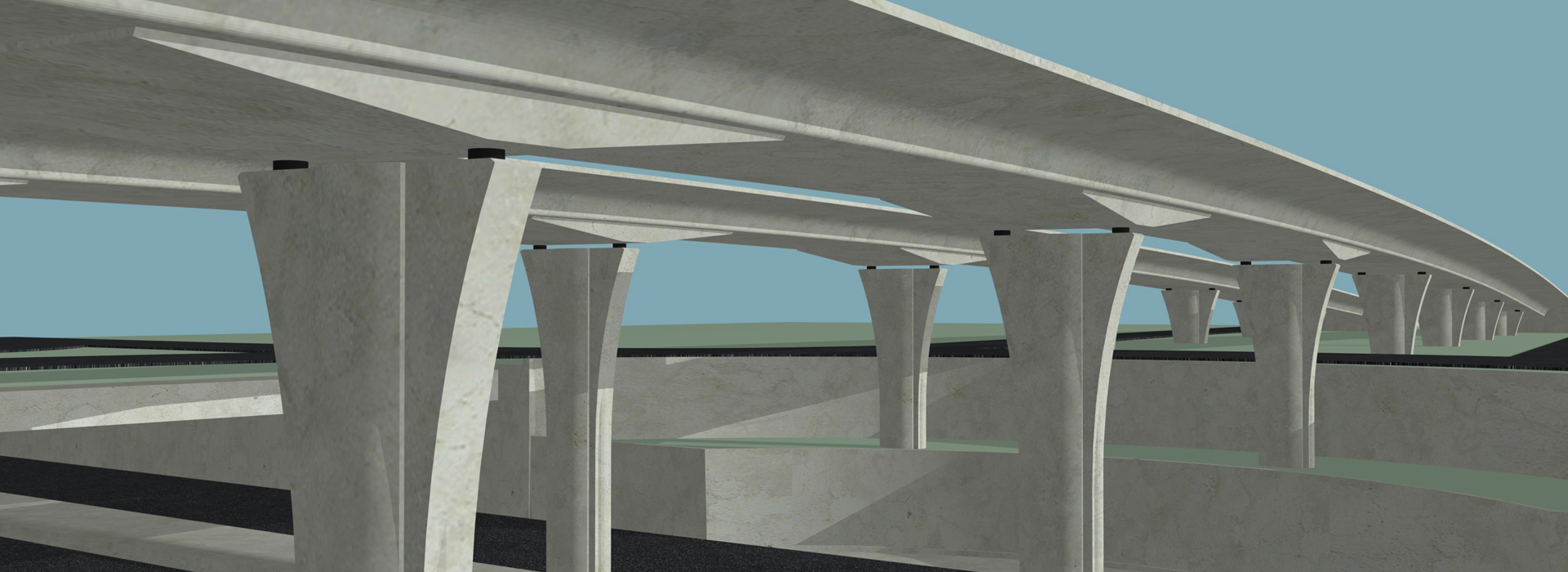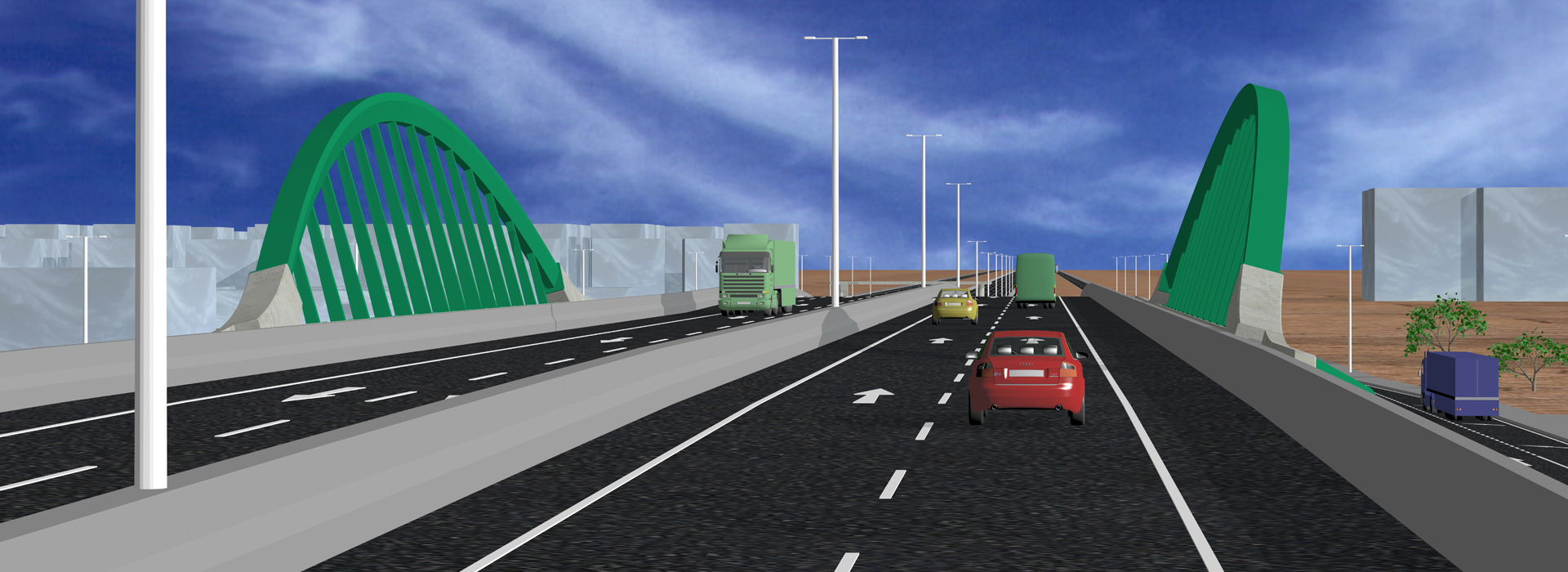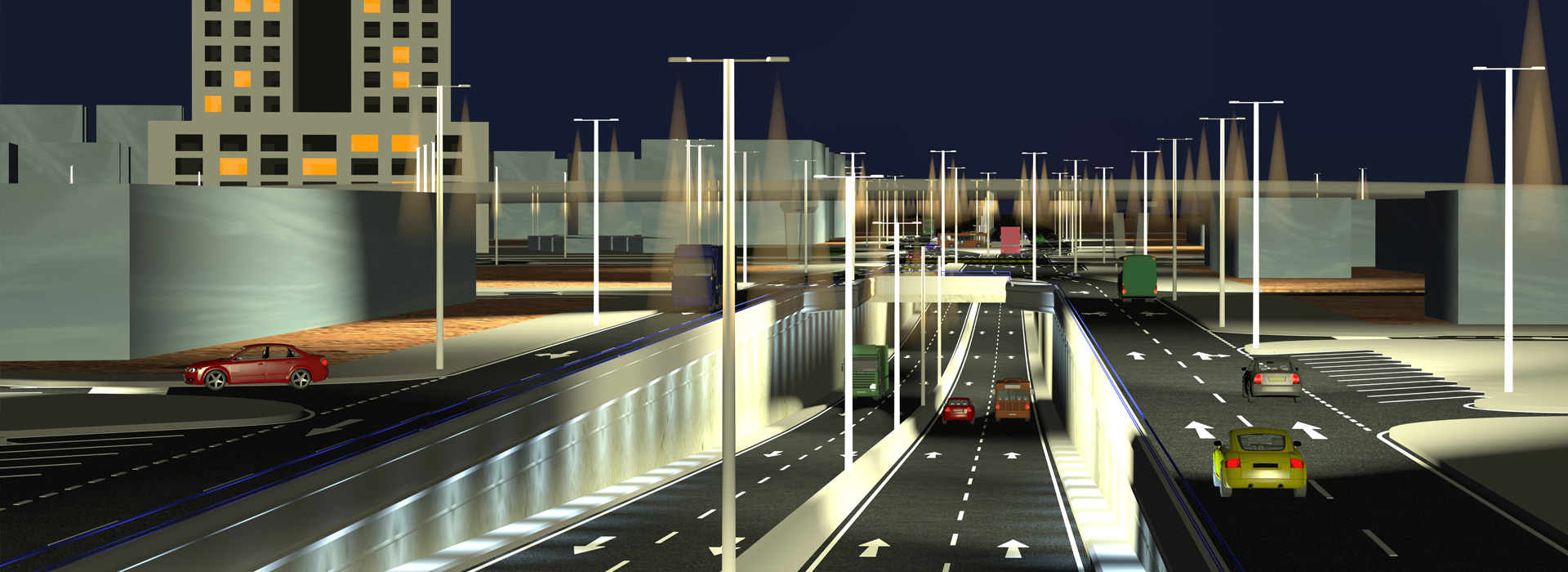Projects: Transportation infrastructures
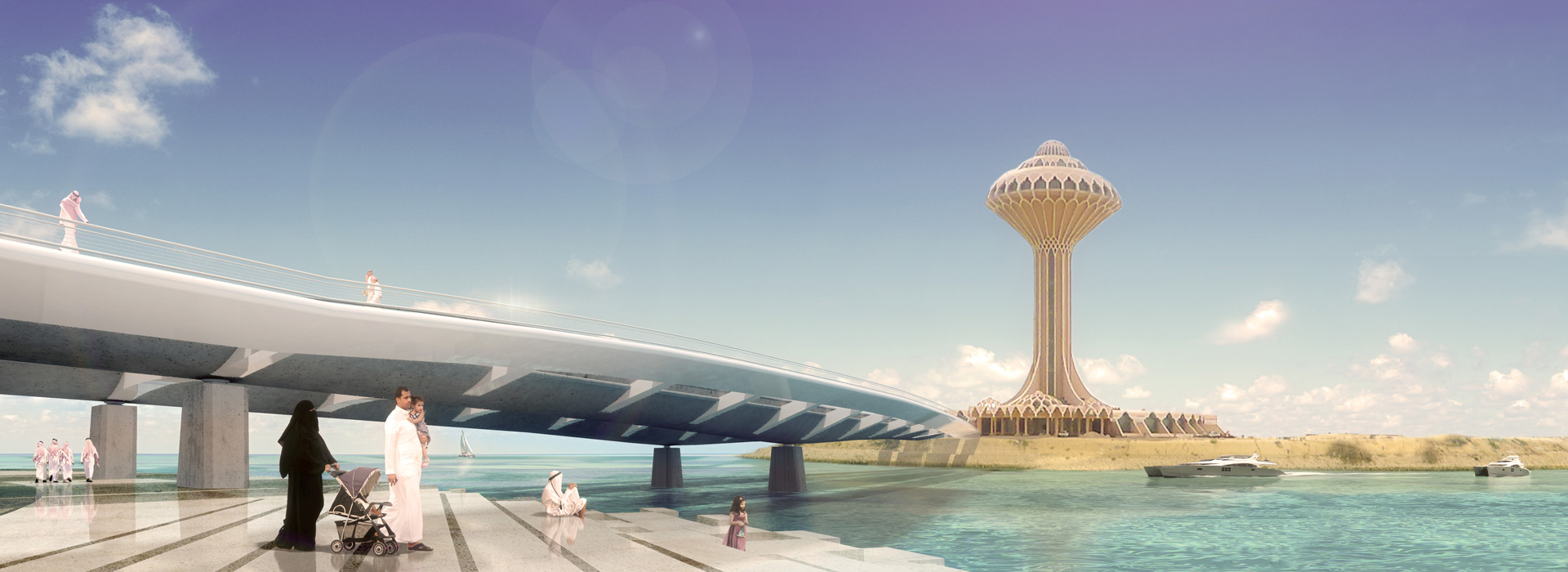
URBAN ROAD INTERCHANGES IN DAMMAM AND KHOBAR
PRELIMINARY STUDIES AND DETAIL DESIGN PROJECTS FOR ENHANCING AND ORGANIZING 16 ROAD INTERCHANGES IN THE METROPOLITAN CITIES OF DAMMM AND AL-KHOBAR, IN SAUDI ARABIA
16 new road interchanges at different levels in the cities of Dammam and Khobar
Area of activity
TRANSPORT INFRASTRUCTURES
Service
Roads and highways
Client
Dammam Eastern Municipality
Scope
- Traffic and feasibility studies of the works.
- Analysis of work phases and affected services
- Calculation and design of large structures (overpasses and underpasses)
- Detailed design project
- BIM models development
Duration
2014-2018
The design of 16 new road links at different levels in the cities of Dammam and Khobar form the object of the Municipality of Dammam. The goal is to improve urban mobility in highly congested environments on the east coast of Saudi Arabia, while providing elements with the best aesthetic, environmental and social outcome in their surroundings. The total budget for the planned works amounted to €748 million.
Numerous viaducts and underpasses were designed, making up a total of 16 construction projects that make up the overall project. The viaducts are generally box-section decks with maximum spans of 90 m. In some cases, it has been necessary to design viaducts built by cantilevered overpasses for longer spans and bridges crossing city arteries where temporary detours are not possible.
Included in the links is the project for access to the island on which is located one of the most recognizable elements of the city of Khobar. The bridge has been designed to blend into the high-quality environment of the promenade, which is currently under renovation.
In addition to the important structures designed, for all these intersections, in the first stage (Conceptual Design) different traffic counts have been carried out and from this data, a traffic analysis has been performed to determine the best alternative design to meet current and future demands. All final solutions were based on at-grade intersections to avoid conflicting traffic flows. Traffic microsimulation studies performed for each intersection were used as a basis.


